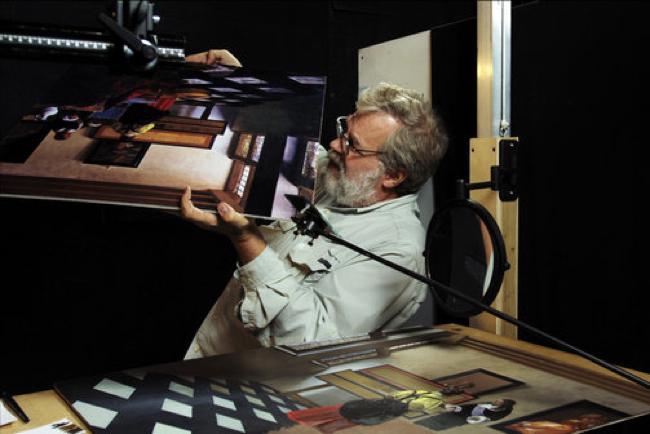
The Dutch painter Johannes Vermeer, considered to be one of the Old Masters of art, is well known for his photorealistic paintings. Although he entered a painters’ guild at age 21 during the 1600s – with no evidence of prior training – Vermeer demonstrated an understanding of lighting, highlights, blurring, tone, foreground and background – the things you see in photographs. It’s this skill that has made his art highly valuable, but also a source of controversy, as some experts have questioned whether Vermeer was truly an Old Master or employed the use of lens- and mirror-based equipment, like a camera obscura, to help him achieve his technique. In a profile by Kurt Andersen in Vanity Fair, a Texas inventor, Tim Jenison, spent years to decipher how Vermeer may have made his paintings – possibly solving the debate – and is the subject of an upcoming documentary film by magicians Penn and Teller.
Prior to his involvement, Jenison is the founder of NewTek, a company that made hardware and software for video production and post-production. He became interested in the Vermeer mystery after reading a book, Secret Knowledge: Rediscovering the Lost Techniques of Old Masters, by David Hockney, one of world’s great living artists who was one of the experts who stirred up the Vermeer controversy. As an inventor with no prior experience in art, the thought of reconstructing how Vermeer could have achieved his photorealistic paintings intrigued him, and sought out to prove/disprove the theories brought up by the likes of Hockney.
Jenison spent five years researching, which took him to the Netherlands, where Vermeer’s art are displayed and home to places Vermeer had painted. He even learned to read Dutch. Andersen wrote, “Much later, he did a computer analysis of a high-resolution scan of a Vermeer interior, and discovered ‘an exponential relationship in the light on the white wall.’ The brightness of any surface becomes exponentially less bright the farther it is from a light source – but the unaided human eye doesn’t register that. According to Jenison, the painting he digitally deconstructed shows just such a diminution from light to dark.” Jenison later realized that Vermeer might have used a mirrored device, specifically a camera obscura – the “high-tech” of that period. Trying out this technique, Jenison was able to perfectly reproduce a photograph in painting. But in order to put it to a real test – one that might answer the Vermeer question – Jenison rebuilt the exact room that was featured in the artist’s “The Music Lesson,” and reverse-engineered a lens-mirror contraption based on what Vermeer might have used.
Jenison, who is friends with Penn Jillette, told the magician about his experiment. Penn and his partner Teller became equally fascinated and documented Jenison’s work, in the film Tim’s Vermeer. After the experiment and more research, Jenison became 95-percent certain that Vermeer employed some sort of device as an aide. Many art experts still disagree and the controversy continues. Jenison’s work may have seemingly put Vermeer’s genius into question, but Andersen points out that it’s not uncommon for great artists to utilize tools.
The interesting part about Andersen’s story isn’t so much about solving the Vermeer riddle, but the details about the lengths Jenison went through. Set aside a half-hour and read more about Jenison’s work.
(Via Daring Fireball via Vanity Fair; image via Sony Pictures Classics)


